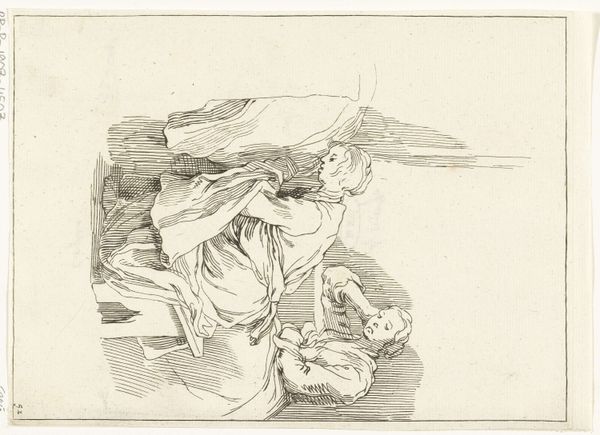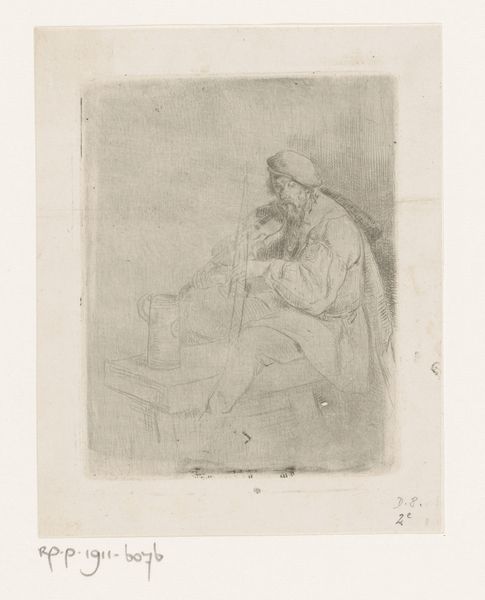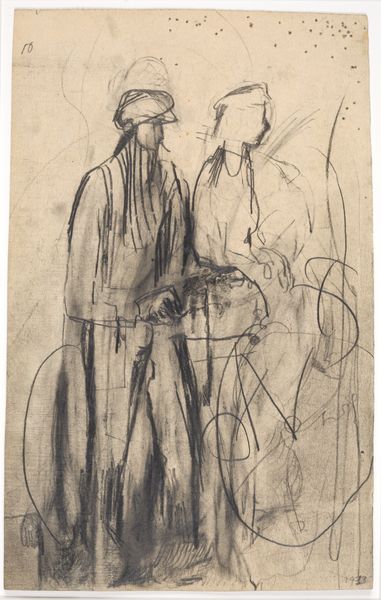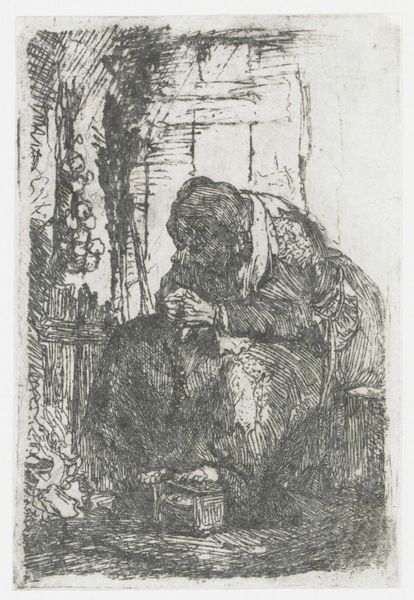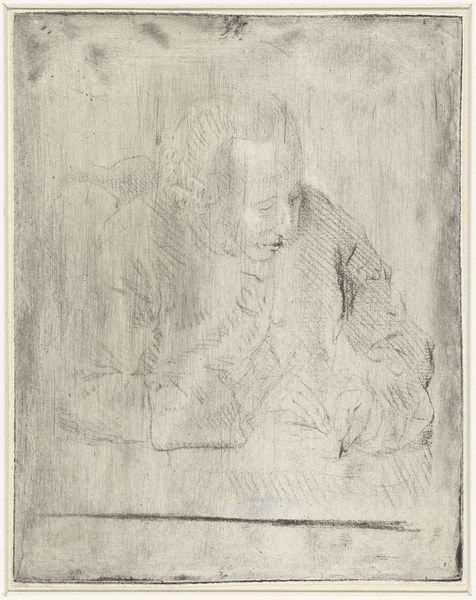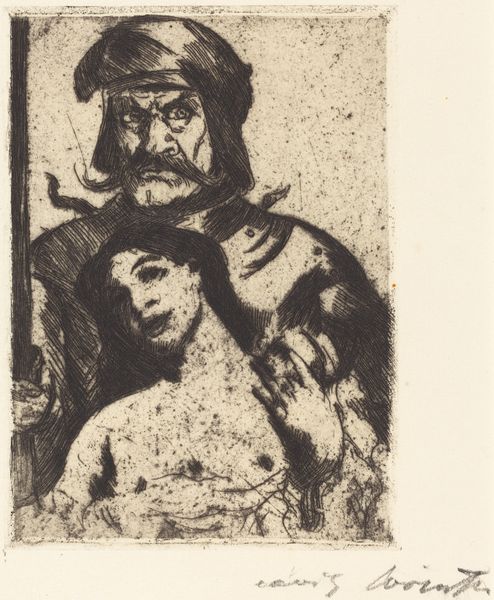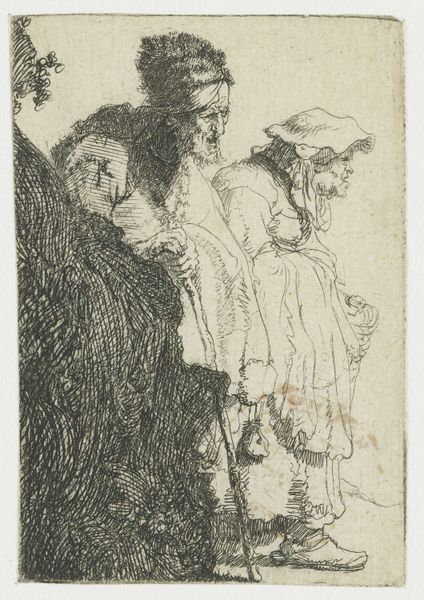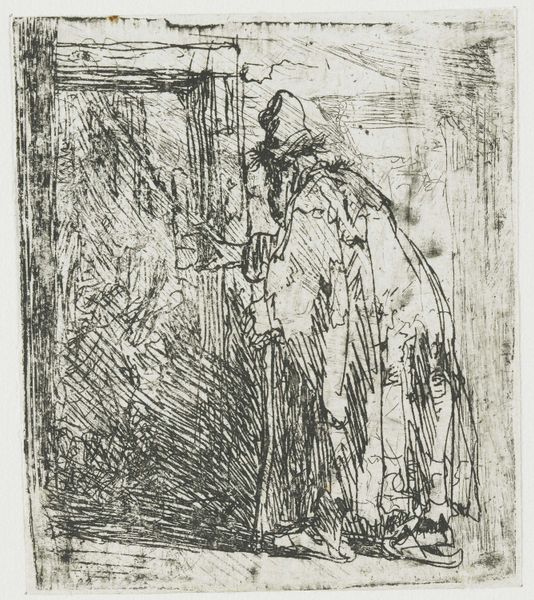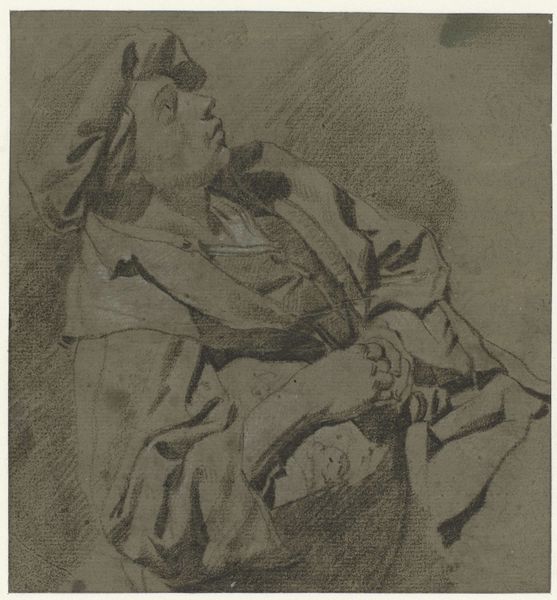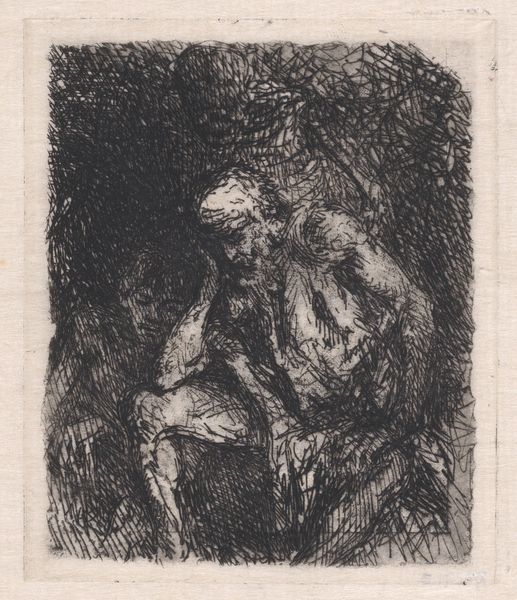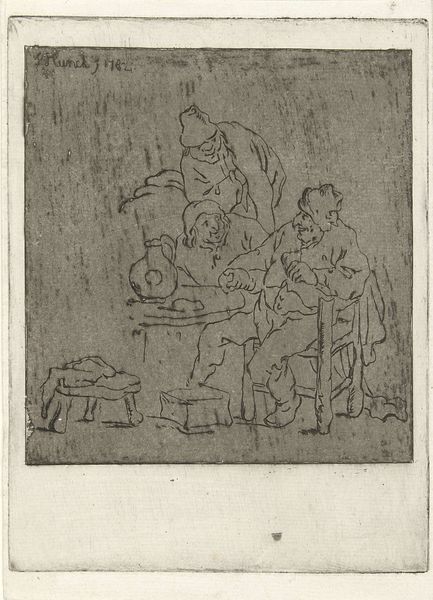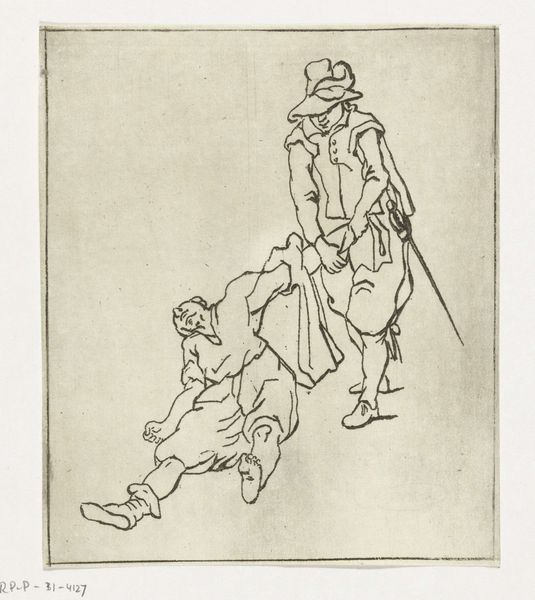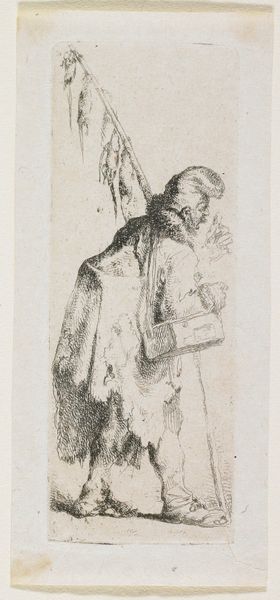
print, etching
#
portrait
#
ink drawing
#
baroque
# print
#
etching
#
etching
#
figuration
#
line
Dimensions: height 69 mm, width 52 mm
Copyright: Rijks Museum: Open Domain
Curator: Here we have an etching by Willem Drost, likely created sometime between 1643 and 1670. It is titled “Arts die de polsslag van een kind meet,” or "Doctor examining a child's pulse". Editor: The tonal range in this print is striking. It creates a mood of contemplative silence, with just a touch of anxiety simmering beneath the surface, almost claustrophobic. It feels like a very intimate moment made permanent, despite the sketch-like lines. Curator: Drost certainly makes dynamic use of line here, wouldn't you agree? Notice the complex interplay of light and shadow that is achieved solely through hatching and cross-hatching. The diagonal lines create an intriguing perspective, making the composition that much more visually compelling. Editor: The composition also feels quite staged, considering the period in which Drost worked, which adds layers to the possible stories. What narrative might be revealed through understanding the history of medicine and patienthood within a colonial context? Curator: Interesting angle. But have you also considered the materiality itself? Etching demands a calculated process; its deliberate nature seems perfectly suited to portraying this solemn occasion, lending gravity to the depicted encounter. Editor: The very deliberate nature is undeniable, and I wonder how issues of power affect the exchange. Looking at art through that lens, through cultural studies, opens dialogues around consent, care, and historical imbalances in healthcare. Who held power, who was rendered vulnerable? Curator: The beauty lies in its structural integrity. Whether you focus on technique, narrative, or cultural politics, it all comes back to formal and aesthetic elements, line quality, tone, etc., doesn't it? Editor: Indeed, and recognizing the confluence of these forces encourages viewers to engage critically. Art is, after all, inseparable from culture, prompting constant inquiry.
Comments
No comments
Be the first to comment and join the conversation on the ultimate creative platform.
